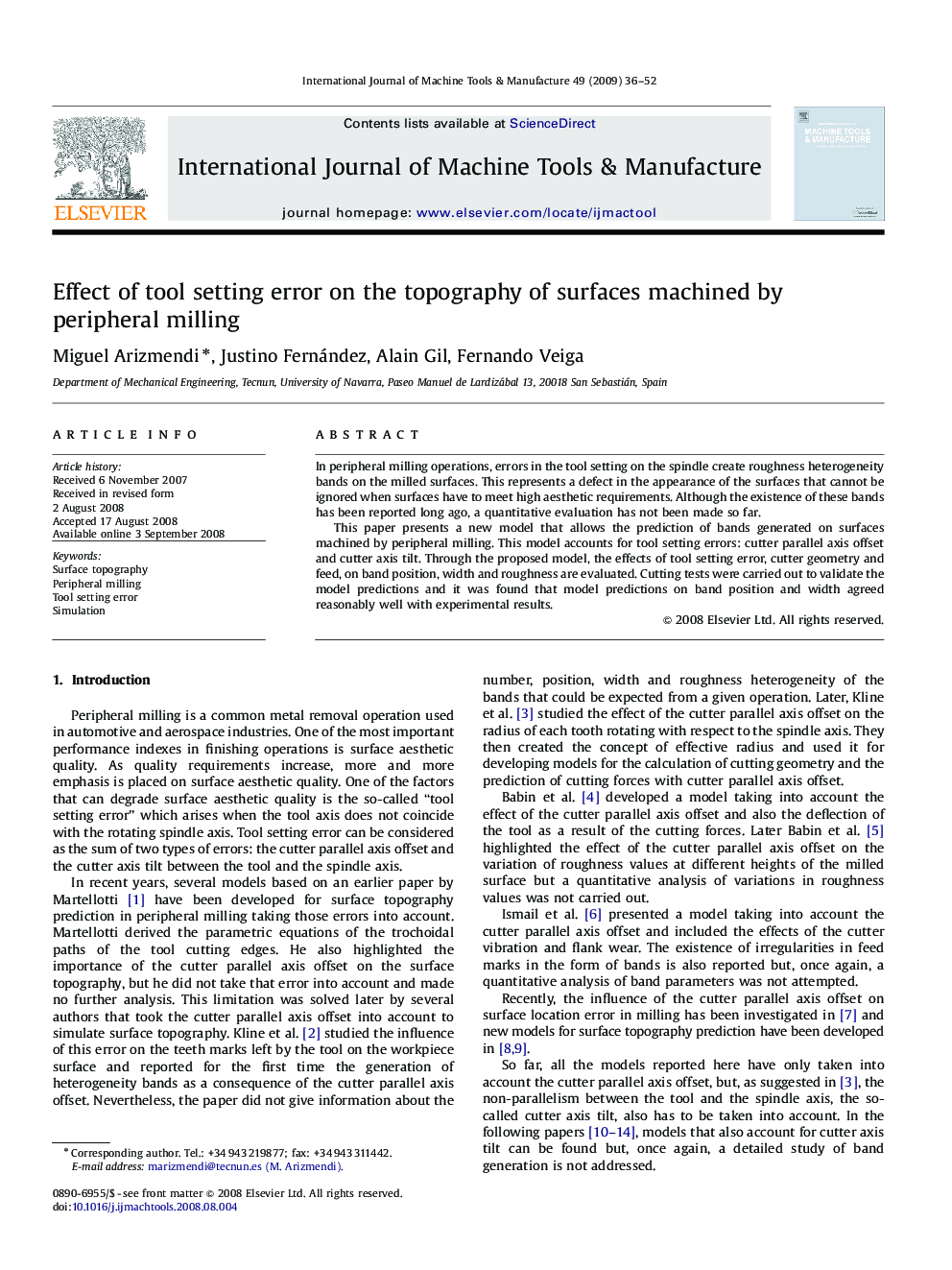| Article ID | Journal | Published Year | Pages | File Type |
|---|---|---|---|---|
| 784576 | International Journal of Machine Tools and Manufacture | 2009 | 17 Pages |
In peripheral milling operations, errors in the tool setting on the spindle create roughness heterogeneity bands on the milled surfaces. This represents a defect in the appearance of the surfaces that cannot be ignored when surfaces have to meet high aesthetic requirements. Although the existence of these bands has been reported long ago, a quantitative evaluation has not been made so far.This paper presents a new model that allows the prediction of bands generated on surfaces machined by peripheral milling. This model accounts for tool setting errors: cutter parallel axis offset and cutter axis tilt. Through the proposed model, the effects of tool setting error, cutter geometry and feed, on band position, width and roughness are evaluated. Cutting tests were carried out to validate the model predictions and it was found that model predictions on band position and width agreed reasonably well with experimental results.
